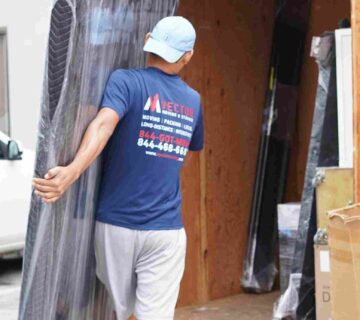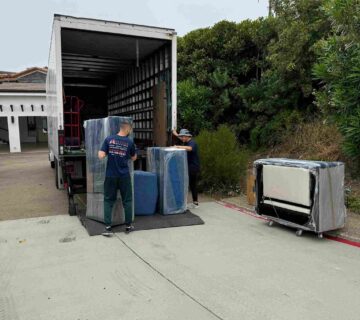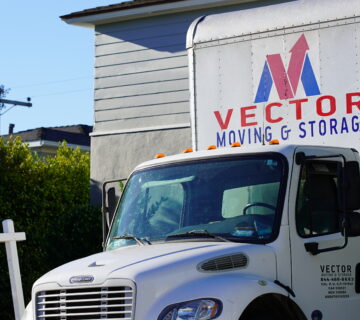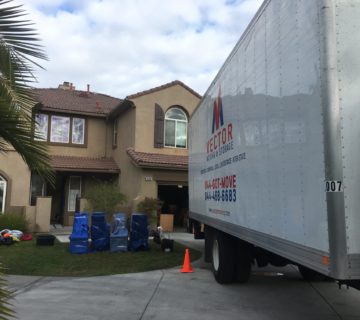How Many Boxes Do You Need for Your Move? A Comprehensive Guide from Vector Moving and Storage San Diego
Moving can be a daunting task, especially when it comes to packing your belongings. One of the most frequently asked questions we receive at Vector Moving and Storage San Diego is, “How many boxes do I need for my move?” The answer isn’t as straightforward as one might think, as it depends on several factors including the size of your home, the number of items you own, and your packing style. In this guide, we’ll break down how to estimate the number of boxes you’ll need for your move, ensuring that you’re well-prepared for a smooth transition.
Understanding Your Space
1. Assessing Your Home Size
The first step in determining how many boxes you’ll need is to assess the size of your home. Here’s a general guideline based on different home sizes:
– Studio Apartment: Typically requires about 10-15 boxes.
– 1-Bedroom Apartment: Expect to need around 15-25 boxes.
– 2-Bedroom Apartment: You’ll likely need 25-35 boxes.
– 3-Bedroom House: Anticipate needing 35-50 boxes.
– 4-Bedroom House or Larger: You may require 50+ boxes.
These estimates can vary based on individual circumstances, but they provide a solid starting point.
2. Evaluating Your Belongings
Once you have an idea of your home size, it’s time to evaluate the specific items you own. Consider the following categories:
– Furniture: Larger items like sofas and beds may not require boxes, but smaller furniture pieces might need protection.
– Clothing: Wardrobe boxes are ideal for hanging clothes, while regular boxes can hold folded items.
– Kitchenware: Dishes, pots, and utensils will need sturdy boxes to prevent breakage.
– Books and Media: These can be heavy, so smaller boxes are often more manageable.
– Miscellaneous Items: Toys, decorations, and tools should also be accounted for.
By taking inventory of your belongings, you can get a clearer picture of how many boxes you’ll need.
Box Types and Sizes
Understanding the different types of boxes available is essential for effective packing. Here are some common box types you might consider:
1. Standard Moving Boxes
These are typically available in various sizes:
– Small Boxes (1.5 cu ft): Ideal for books, small kitchen appliances, and fragile items.
– Medium Boxes (3 cu ft): Suitable for toys, shoes, and small electronics.
– Large Boxes (4.5 cu ft): Great for linens, larger kitchen items, and clothing.
2. Specialty Boxes
Certain items may require specific types of boxes:
– Wardrobe Boxes: Tall boxes with a hanging rod for clothing.
– Dish Pack Boxes: Double-walled boxes designed for fragile dishes and glassware.
– Mirror and Picture Boxes: Adjustable boxes to protect artwork and mirrors.
3. Packing Materials
In addition to boxes, don’t forget about packing materials such as bubble wrap, packing paper, and tape. These materials help protect your belongings during the move.
Estimating Box Quantity
To estimate how many boxes you’ll need based on your inventory, consider the following formula:
1. Divide Your Items by Category: List out all your items by category (clothing, kitchenware, etc.).
2. Estimate Boxes Per Category:
– For every room in your home, estimate how many boxes will be needed based on the average number of items in that room.
– Use the guidelines mentioned earlier to help with this estimation.
Example Estimation
Let’s say you live in a 2-bedroom apartment. Here’s a breakdown of how you might estimate box quantities:
– Living Room:
– Books: 2 small boxes
– Electronics: 1 medium box
– Decorations: 1 medium box
– Total: 4 boxes
– Kitchen:
– Dishes: 2 dish pack boxes
– Pots and pans: 1 large box
– Miscellaneous kitchen items: 1 medium box
– Total: 4 boxes
– Bedroom 1:
– Clothing: 1 wardrobe box + 1 large box
– Shoes: 1 medium box
– Total: 3 boxes
– Bedroom 2:
– Clothing: 1 wardrobe box + 1 large box
– Toys: 1 medium box
– Total: 3 boxes
– Bathroom:
– Toiletries: 1 small box
– Towels: 1 large box
– Total: 2 boxes
Total Estimate
Adding these up gives you a total of approximately 16 boxes for a typical 2-bedroom apartment. Adjust based on your specific belongings.
Tips for Efficient Packing
Now that you have an idea of how many boxes you’ll need, here are some tips to make your packing process more efficient:
1. Start Early
Begin packing well in advance of your moving day. This will give you ample time to sort through your belongings and minimize last-minute stress.
2. Declutter Before Packing
Take the opportunity to declutter your home before packing. Donate or sell items you no longer use or need; this will reduce the number of boxes required.
3. Label Your Boxes
Label each box with its contents and the room it belongs in. This will make unpacking easier and more organized.
4. Use Quality Boxes
Invest in sturdy, high-quality moving boxes to protect your belongings during transit. Cheap boxes may break or collapse under weight.
5. Fill Empty Spaces
Use packing paper or bubble wrap to fill empty spaces within boxes to prevent items from shifting during transport.
The Vector Moving and Storage Advantage
At Vector Moving and Storage San Diego, we understand that moving is more than just transporting items; it’s about transitioning to a new chapter in your life. Our team of experienced professionals is here to assist you every step of the way—from providing packing supplies to offering expert packing services.
Personalized Assistance
We offer personalized consultations to help you determine exactly how many boxes you’ll need based on your specific situation. Our experts can guide you through the process, ensuring that you have everything necessary for a smooth move.
Quality Packing Supplies
We provide high-quality packing supplies at competitive prices. Whether you need standard moving boxes or specialty options, we’ve got you covered.
Professional Packing Services
If packing seems overwhelming, consider our professional packing services. Our trained movers can pack your belongings efficiently and securely, allowing you to focus on other aspects of your move.
Conclusion
Determining how many boxes you need for your move is crucial for a successful transition. By assessing your home size, evaluating your belongings, and understanding box types, you can make an informed estimate that suits your needs.
At Vector Moving and Storage San Diego, we’re committed to making your moving experience as seamless as possible. Whether you’re looking for packing supplies, professional assistance, or storage solutions, our team is here to help. Contact us today for a free consultation and let us take the stress out of your next move!
—
This comprehensive guide should provide valuable information for anyone preparing for a move while also promoting Vector Moving and Storage as a reliable choice in San Diego! If you need any adjustments or additional sections, feel free to ask!






No comment